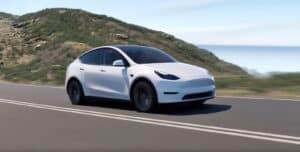EV Prices Set to Drop in 2024, Offering More Affordable Green Options

Declining Prices Amid Unsold Inventory: A Boon for EV Buyers
Electric vehicle (EV) prices are expected to become more affordable in 2024 due to an oversupply on dealer lots. Despite federal and state tax credits, the demand for EVs hasn’t matched the production rate, leading to a glut of unsold vehicles, reports CNBC.
Automakers Slashing Prices to Boost Demand
To increase consumer demand, automakers, including Tesla, have reduced prices significantly, some by over 20% in the last year. Generous lease terms and cash rebates have also been offered to make EVs more enticing for buyers.
Used EVs Also Becoming More Affordable
The used EV market mirrors this trend, with prices in October 2023 being 33.7% cheaper than in October 2022. According to iSeeCars, this downward trend in EV pricing is expected to continue into 2024.
Growing Share of Electric and Hybrid Vehicles
Despite the current inventory surplus, EVs and hybrids are gaining market share, growing from 9% in 2021 to 16% in 2023. However, product availability is outpacing consumer acceptance, leading to excess inventory.
Government Regulations Spurring EV Production
With proposed emission rules targeting two-thirds of all vehicles in the U.S. to be all-electric by 2032, manufacturers are increasing production. The number of EV products is predicted to double by 2027.
Inventory Surplus and Consumer Reluctance
The inventory of unsold EVs has risen to a 114-day surplus as of November. Consumer reluctance to shift from gas-powered to electric vehicles is partly due to higher costs and concerns about charging infrastructure.
New Federal Tax Credits in 2024
Starting January 1, 2024, new federal tax credits will make EVs more affordable at the point of sale. Buyers can claim up to $7,500 off qualifying new EVs or plug-ins, and up to $4,000 off used ones, without waiting to claim them in tax returns.
State Tax Credits and Incentives
Nearly half of the U.S. states offer additional tax credits, potentially totaling up to $7,500. These federal and state credits, combined with discounts and lease agreements, will make many EVs price-competitive with gas-powered vehicles.
Average EV Prices Nearing Parity with Gas-Powered Vehicles
The average price of EVs is nearing parity with gas-powered vehicles. Stephanie Valdez-Streaty of Cox Automotive notes that the EV premium has reduced from over 30% a year ago to less than 10% today.
Qualifying for Federal Credits: A Complex Process
However, qualifying for federal credits is complex and depends on factors like parts being U.S.-made, buyer’s income, and previous claims. Not all EVs or hybrids will qualify for full credits, leading to potential confusion among buyers.
IRS Directing Buyers to FuelEconomy.gov
The IRS has not published a comprehensive list of qualifying vehicles. Instead, buyers are directed to use FuelEconomy.gov to check vehicle eligibility for tax credits before making a purchase. This step is crucial to avoid confusion and ensure eligibility for the credit.
With EV prices declining and new incentives on the horizon, 2024 promises to be an opportune year for consumers looking to transition to eco-friendly vehicles.




